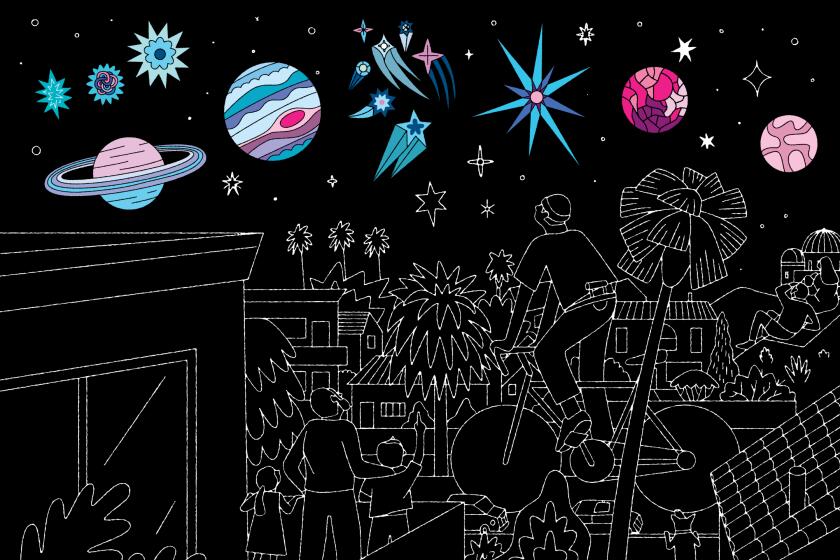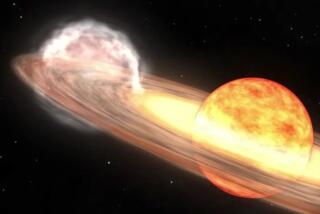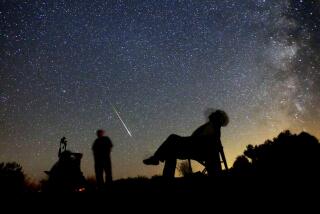How to take a spectacular photo of the total lunar eclipse Tuesday
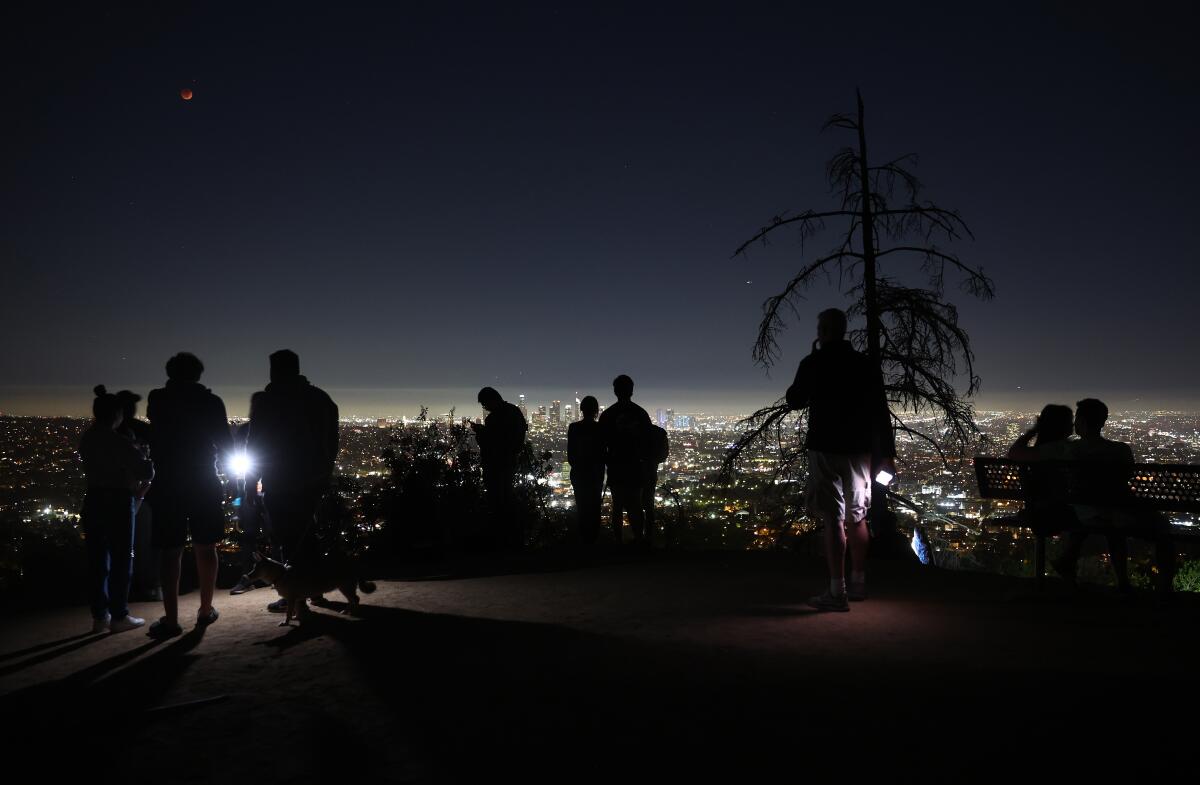
- Share via
In May, Southern California enjoyed a gorgeous lunar eclipse just after sunset on a clear Sunday night, peaking at 8:30 p.m. in the eastern sky. I slept through it, exhausted after getting back from a trip to Mexico earlier that day. A few months before, in November 2021, I had woken myself at midnight for the eclipse — only to find the sky shrouded in clouds.
I’m determined to break my streak with the upcoming eclipse Tuesday. Thanks to the hour, November’s lunar eclipse won’t be nearly as viewer-friendly as the one in May — the full eclipse will happen between 2:15 and 3:40 a.m., when most of us are happily asleep in bed. But it will be my last chance for a while.
An average year has one or two eclipses, as the moon passes through the Earth’s shadow. However, we’re in for an eclipse drought: There will be no total lunar eclipses worldwide in 2023 or 2024. Our next chance to see a total eclipse won’t be until March 2025.
The sky above is filled with wonders; you have only to leave your house and look up to see stars, planets, the moon and so much more. Here’s how to get started.
Unlike the faint glow of our galaxy, which is easily overpowered by light pollution from far-off cities, the full moon is a a very bright fixture of the night sky, and easily spotted even from the middle of a glowing metropolis. Most people can enjoy the eclipse from their own yard, street, patio or park. It’s safe to look at a lunar eclipse, and the moon will be bright enough to see anywhere with a clear view of the sky.
For those like me who are looking to capture the moment, here’s how you might plan your shoot.
Find a spot with a clear sky
Clouds are the quickest way to ruin your shot. Southern California normally experiences a dry fall, but we’ve had an uncommonly cloudy October this year. Thankfully, you can check the National Oceanic and Atmospheric Administration’s website for Southern California and click “sky cover” and a forecast time to see the expected cloud cover. I’ll plan a few possible options for photo locations, and make a game time decision based on the forecast.
The eclipse will pass from the southwestern to western sky, and the moon will be slightly low to the horizon by the time the eclipse ends. Try to avoid locations where buildings, mountains or other large features can obscure your western view of the moon. So long as the weather cooperates, the beach should be an ideal vantage point for seeing and shooting the eclipse.
Plan your shot
Unlike solar eclipses, which can be over in minutes, this lunar eclipse will occur over about a 90-minute period, leaving you lots of chances to get a variety of shots. Still, it’s helpful to think about where you want to set up your camera.
One app that helps a lot with this is PhotoPills for iOS and Android, which lets you plan a shoot by entering a date and location. It will use your phone’s camera to generate an AR view of the paths of the moon and sun, so you can see where the moon will be in the sky during the eclipse.
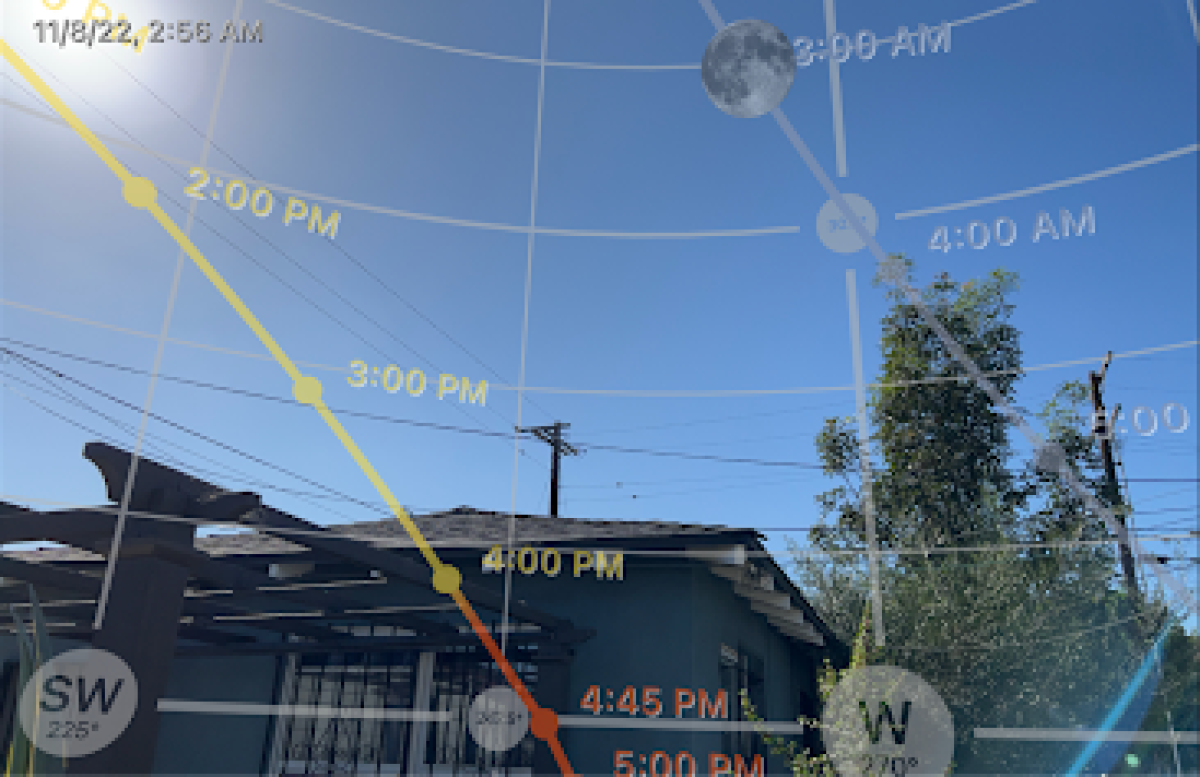
Though the eclipse lasts a long time, you should be able to notice some interesting changes over its course. Rather than completely disappear, the eclipsed moon will take on a dark red cast (often called a “blood moon”) because the little sunlight that reaches it has passed through our atmosphere at an angle. The atmosphere filters out blue light through the same phenomenon that creates colorful sunsets, leaving only the warm colors to fall on the lunar surface.
Take your photo
The process of taking a lunar eclipse photo isn’t any different from most other night sky photography, and the same principles apply whether you’re using a professional camera or a cellphone.
To get a good shot in the dark, your camera will need a long exposure, which means it will be especially sensitive to motion and handling. Use a tripod to hold your camera steady, and if possible, set a delay on your camera or use a remote shutter. If you have an iPhone and an Apple Watch, you can even use your watch as a remote shutter for your camera. If you’ll be shooting somewhere windy, think about weighing down your tripod — even a faint vibration can blur your shots.
It’s also important to set your exposure for the moon itself — otherwise, auto-exposure settings will overcorrect for the dark sky around it, leaving you with a glowing blob for the moon. With a camera, you should set your ISO to its lowest setting (usually ISO 100) and then adjust your shutter and aperture until the point where the moon is bright but you can see detail in its surface. On your phone, look up how to lock your exposure — on the iPhone, you can long press the part of the image you want to expose, and a lock indicator will appear. Then just drag your finger up or down to increase or decrease your exposure until it looks right.
Pick a telephoto lens to make the moon as big as possible in your shot, and take your shot. And if the weather, or the wind or your camera don’t cooperate — don’t worry. We’ll have another chance to get the shot in just two and a half short years.
More to Read
Sign up for The Wild
We’ll help you find the best places to hike, bike and run, as well as the perfect silent spots for meditation and yoga.
You may occasionally receive promotional content from the Los Angeles Times.
